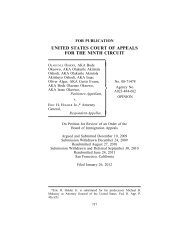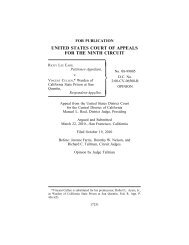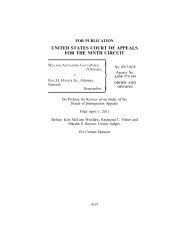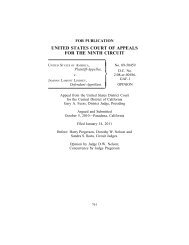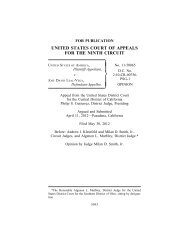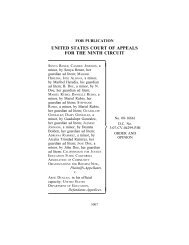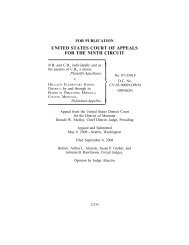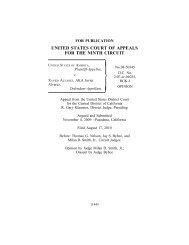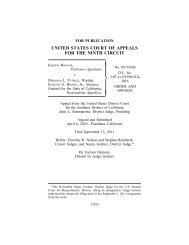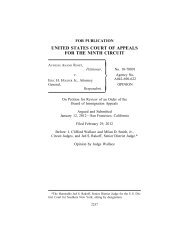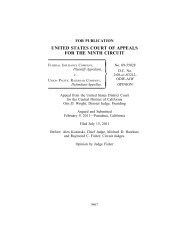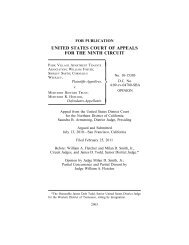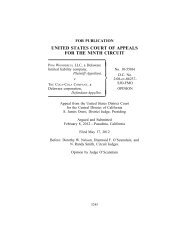UNITED STATES COURT OF APPEALS FOR THE NINTH CIRCUIT
UNITED STATES COURT OF APPEALS FOR THE NINTH CIRCUIT
UNITED STATES COURT OF APPEALS FOR THE NINTH CIRCUIT
You also want an ePaper? Increase the reach of your titles
YUMPU automatically turns print PDFs into web optimized ePapers that Google loves.
9764 PAYNE v. PENINSULA SCHOOL DISTRICT<br />
showing that the relief being sought by that plaintiff was, in<br />
fact, available under the IDEA. Because the line between<br />
damages available under other remedial sources and relief<br />
available under the IDEA is less than clear, the finder of fact<br />
should, in assessing remedies, be permitted to assess the evidence<br />
and withhold those that are unexhausted and available<br />
under the IDEA.<br />
We recognize that this approach to exhaustion is somewhat<br />
unconventional — it is anomalous to permit a party to raise<br />
failure to exhaust as a defense in both a motion to dismiss and<br />
at the fact-finding stage of a proceeding. But as we have<br />
noted, § 1415(l) is itself an anomalous provision, since it does<br />
not categorically preclude claims and instead requires a court<br />
to examine the relief being sought by those claims and to<br />
compare it to the relief available under the IDEA. Ultimately,<br />
§ 1415(l) is designed to channel requests for a FAPE (and its<br />
incidents) through IDEA-prescribed procedures. The procedure<br />
we have outlined, while somewhat unusual, faithfully<br />
executes Congress’s design.<br />
B<br />
After Payne is given the opportunity to amend her complaint,<br />
the district court should examine each of Payne’s<br />
requests for relief and determine whether the exhaustion<br />
requirement applies to each. It may then dismiss any claims<br />
that are governed by the exhaustion requirement, but it should<br />
not dismiss any remaining claims. 7 To provide additional<br />
7 The dissent contends that we should nonetheless affirm the district<br />
court’s grant of summary judgment (perhaps after deciding to construe it<br />
as an unenumerated motion to dismiss) because “all of the facts presented<br />
to the district court indicated the Paynes were seeking at least some relief<br />
that was ‘also available’ under the IDEA.” Dissenting Op. at 9784.<br />
Although we agree that “at least some” of the relief being sought by Payne<br />
does require exhaustion, we do not think this requires the court to dismiss<br />
Payne’s entire case. We see no reason to adopt such a “total exhaustion



